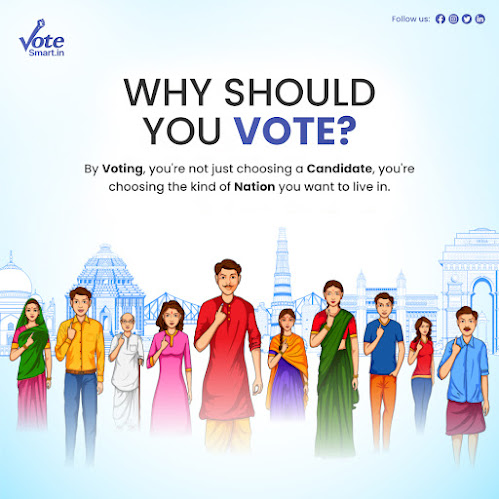From Social Media to the Ballot Box: Understanding the Influence of Digital Platforms on Youth Voting in India
The digital age has revolutionized political participation, particularly among the youth. In India, social media platforms have become powerful tools for mobilizing, informing, and engaging young voters. This blog explores the profound impact of digital platforms on youth voting in India, highlighting the opportunities and challenges they present in shaping the political landscape.
Empowering the Youth through Connectivity
Social media platforms, such as Facebook, Twitter, and Instagram, have created unprecedented connectivity among the youth. They provide a space for political discussions, awareness campaigns, and the dissemination of information. Through these platforms, young voters can connect with political candidates, access news and analysis, and engage in meaningful conversations about the issues that matter to them. This increased connectivity has empowered the youth, enabling them to stay informed, voice their opinions, and make informed decisions when casting their votes.
Amplifying Political Awareness
Digital platforms have significantly amplified political awareness among the youth. Hashtags, trending topics, and viral content have become powerful tools for drawing attention to critical social and political issues. Activism and advocacy campaigns on social media have sparked discussions and mobilized young voters around causes such as environmental sustainability, gender equality, and social justice. The widespread sharing of information and perspectives on digital platforms has expanded the political consciousness of the youth and provided them with a platform to express their concerns, aspirations, and demands.
Challenges of Misinformation and Echo Chambers
While digital platforms offer immense opportunities, they also pose challenges in terms of misinformation and the creation of echo chambers. The rapid spread of fake news, rumors, and manipulated information on social media can mislead young voters and distort their perception of political realities. Moreover, algorithms that personalize content on these platforms can create echo chambers, reinforcing existing beliefs and limiting exposure to diverse viewpoints. It is essential for young voters to critically evaluate information, fact-check, and actively seek out diverse perspectives to ensure that their decision-making is based on accurate and reliable information.
Youth Mobilization and Voter Turnout
Digital platforms have proven to be instrumental in mobilizing the youth and increasing voter turnout. Through social media, political campaigns can reach a broader audience, particularly among the digitally-savvy younger generation. Online voter registration drives, voting reminders, and live coverage of political events on digital platforms have contributed to increased youth participation in the electoral process. By leveraging the power of social media, political candidates and organizations have successfully engaged the youth, encouraging them to exercise their right to vote and become active participants in shaping the future of the nation.
Conclusion
The influence of digital platforms on youth voting in India cannot be underestimated. While they provide unprecedented connectivity and amplify political awareness among young voters, they also pose challenges in terms of misinformation and echo chambers. By critically evaluating information and actively seeking diverse perspectives, young voters can harness the power of digital platforms to make informed decisions and ensure their voices are heard at the ballot box.



Comments
Post a Comment